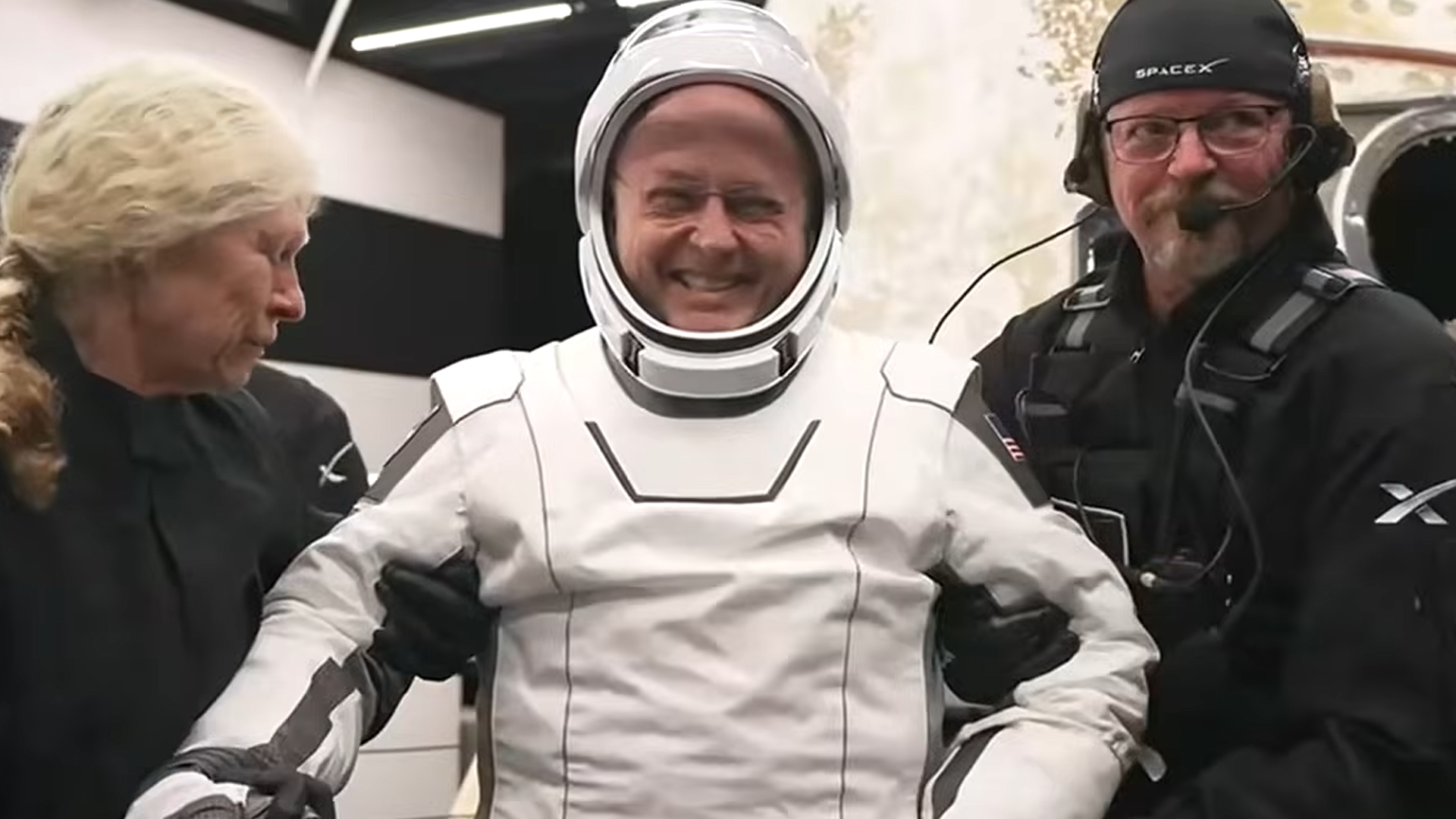New Crew Arrives at Space Station on Russian Spacecraft

This story was updated at 3:56 a.m. ET.
A Soyuz spacecraft carrying an American astronaut and two Russian cosmonauts arrived at the International Space Station (ISS) on Easter Sunday, boosting the orbiting lab's population up to six people just one day ahead of NASA's planned launch of the shuttle Discovery toward the outpost.
The Soyuz TMA-18 spacecraft docked at a rooftop parking spot on station at 1:25 a.m. EDT (0525 GMT), delivering NASA astronaut Tracy Caldwell Dyson and Russian spaceflyers Alexander Skvortsov and Mikhail Kornienko to the station after a two-day spaceflight.
"Contact!" radioed Skvortsov to Mission Control in Russia. Skvortsov commanded the Soyuz's flight as it docked to the station's Poisk docking port as both spacecraft flew 220 miles (354 km) above northern Kazakhstan in Central Asia.
"Everybody's clapping here," Mission Control replied. "Everybody's applauding you guys."
The astronauts are joining their Expedition 23 crewmates already onboard the station, led by commander Oleg Kotov of Russia. Japanese astronaut Soichi Noguchi and NASA astronaut Timothy (T.J.) Creamer round out the team.
Skvortsov and his crewmates launched early Friday on a Soyuz rocket from Baikonur Cosmodrome in Kazakhstan. They lifted off on Good Friday and arrived on Easter, sending many warm wishes to family members and friends back home celebrating the Christian holiday.
Breaking space news, the latest updates on rocket launches, skywatching events and more!
"We are under a great impression of this flight and we have a lot of emotions," Skvortsov said after floating inside the station. "And we would like to again say —Happy Easter — to everybody. It's a wonderful holiday."
Space station gets busy
The Soyuz spacecraft's arrival comes amid a busy week for the space station. NASA's space shuttle Discovery is due to launch Monday from Florida to ferry another seven astronauts to the outpost, where it is scheduled to dock Wednesday.
The newcomers bring the total population onboard to six, the maximum for a long-term live-in crew, for the first time since November 2009.Together, the Expedition 23 astronauts represent three nations. When Discovery arrives, the station's population will jump again — this time to 13 people.
"The first contribution of the ISS, the most important contribution of the ISS, is that we demonstrate how well we can all work together," Skvortsov said in a preflight interview. "No one country can handle such a great task financially, especially, and so this is the first experience of such close cooperation of many countries in space."
New station astronauts
Skvortsov and Kornienko are both making their first spaceflights. Kornienko also plans to conduct one spacewalk during the mission.
"Of course, it will be very exciting for me. It will be my first flight, my first EVA, and, of course, our primary task is to do our work and then we can maybe enjoy some views from the window of the station," Kornienko said before launch.
Dyson is visiting the space station for the second time. She first flew into space in August 2007 aboard the space shuttle Endeavour on its STS-118 flight. She said she's looking forward to experiencing the station as a long-duration crewmember.
On a shuttle mission, "you're just up and running every day," she said in a preflight NASA interview. "I'm looking forward to a more relaxed pace where you can actually enjoy and savor the environment. So much of it flies by on a shuttle mission."
During their stay, the Expedition 23 crewmembers will also host a number of other visiting spacecraft, including the unmanned cargo ship Dragon, built by the commercial firm SpaceX.
"This will be the vehicle that will replace the shuttle for a certain period of time in terms of delivering vital equipment to the ISS so that we can continue our presence in space and our scientific research in space," Skvortsov said, referring to the period after NASA retires the space shuttle fleet.
Only four more flights of the aging orbiters are planned.
SPACE.com is providing complete coverage of Discovery's STS-131 mission to the International Space Station with Managing Editor Tariq Malik in Cape Canaveral, Fla., and Staff Writer Clara Moskowitz based in New York. Click here for shuttle mission updates and a link to NASA TV.

Clara Moskowitz is a science and space writer who joined the Space.com team in 2008 and served as Assistant Managing Editor from 2011 to 2013. Clara has a bachelor's degree in astronomy and physics from Wesleyan University, and a graduate certificate in science writing from the University of California, Santa Cruz. She covers everything from astronomy to human spaceflight and once aced a NASTAR suborbital spaceflight training program for space missions. Clara is currently Associate Editor of Scientific American. To see her latest project is, follow Clara on Twitter.
